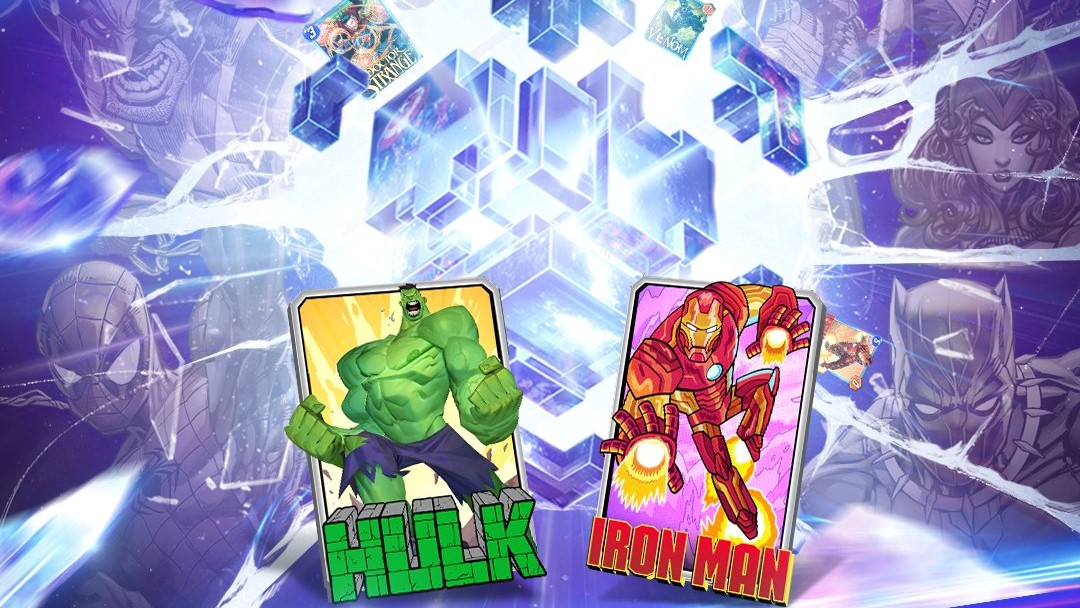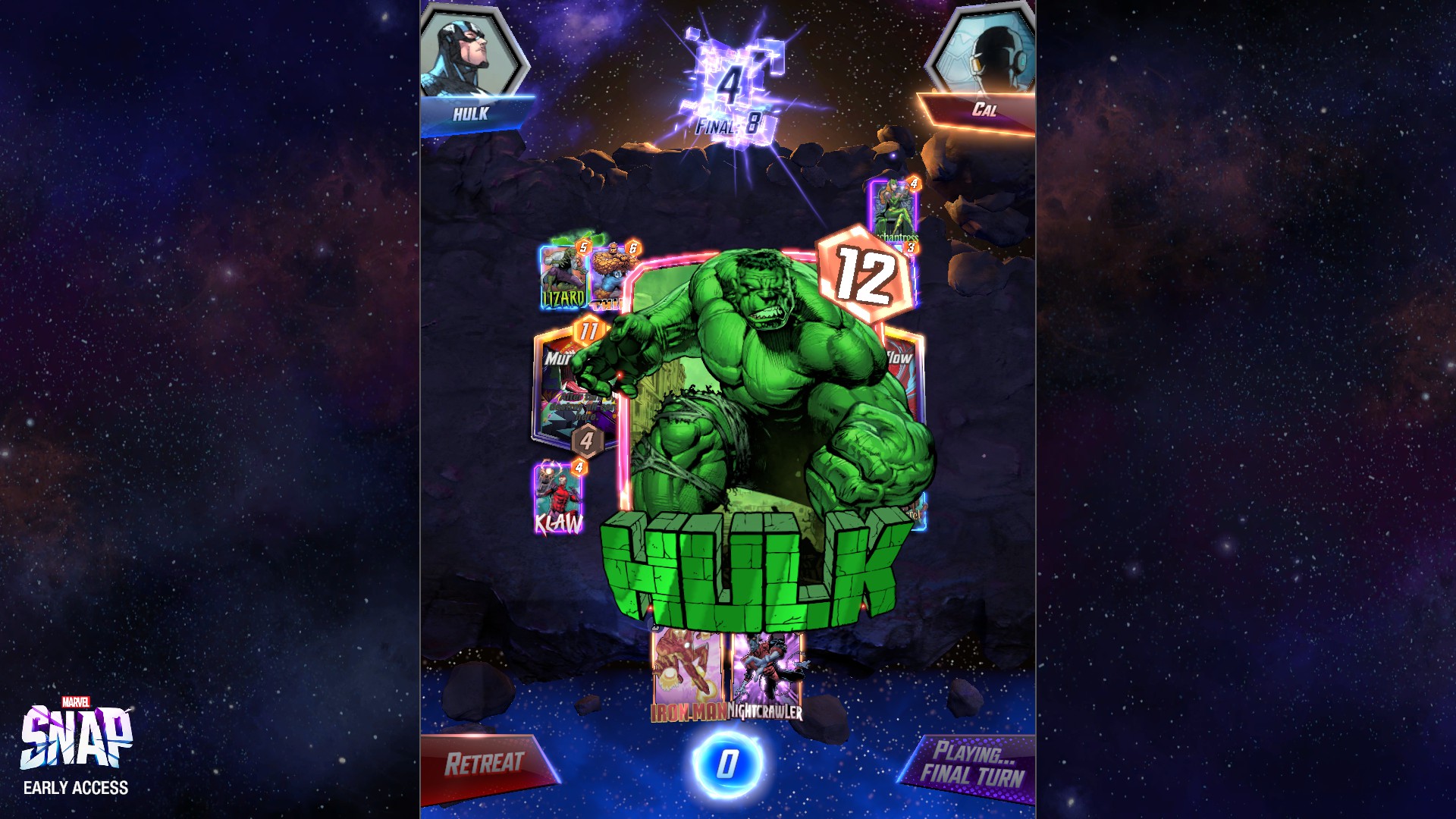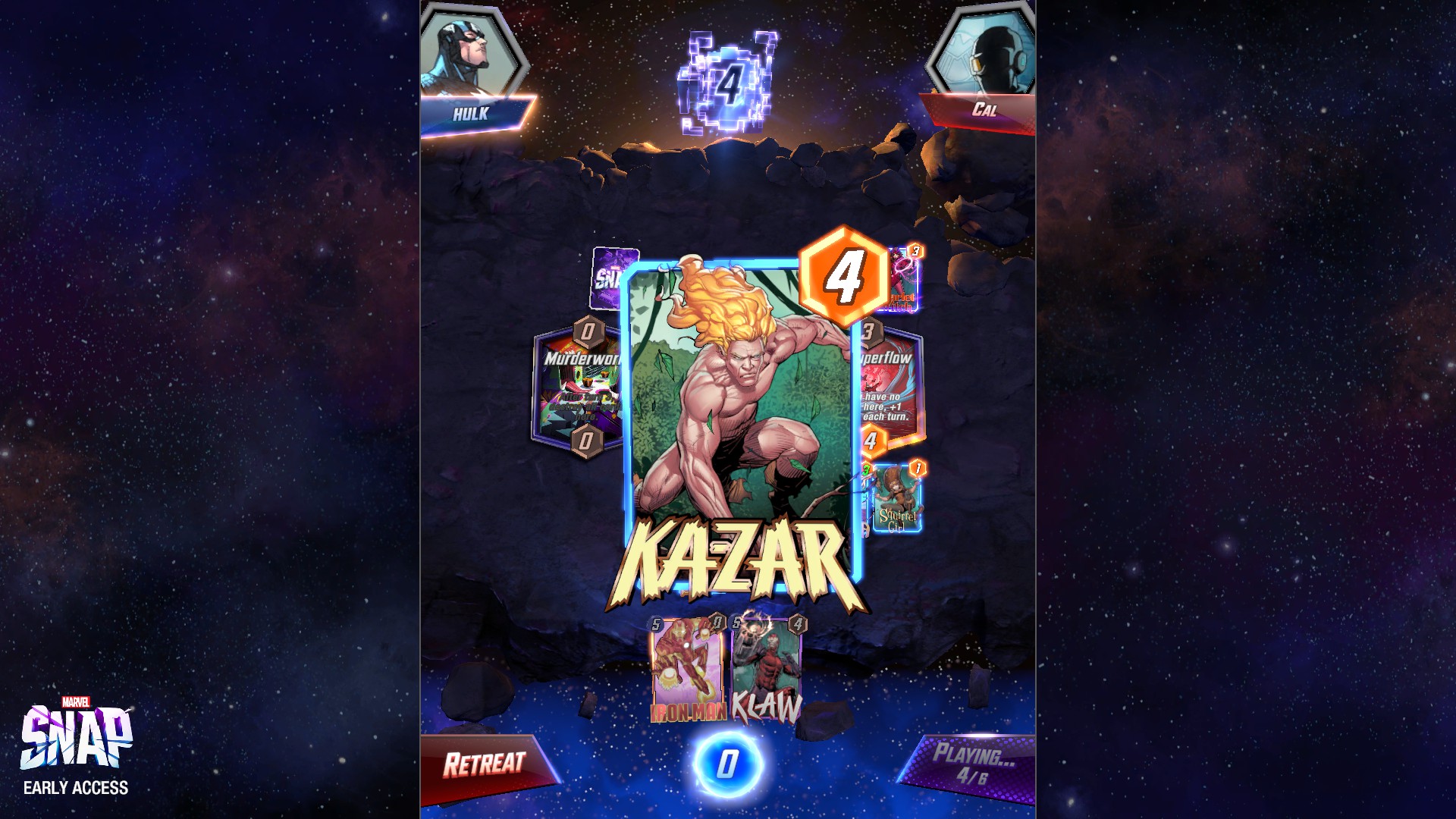Marvel Snap is an ultra-refined CCG I can't stop playing, even if the PC version blows
An ingenious and intricate deck builder that strips away all the fat.

When Marvel Snap released the other week, I mainly downloaded it out of curiosity as to what Ben Brode and his fellow Hearthstone crew had done next. The creators of one of gaming's best CCGs with a license like Marvel seemed like a bit of a no-brainer, but even so Marvel Snap is surprising in so many good ways.
This is one of the most elegantly pared-back designs for a card game I've seen in years, and I play a lot of card games both IRL and digitally. I'm such a junkie for a good CCG that my shelves are groaning, and I've developed a weird fetish for the super complex ones that you never play because no sane person wants to hear rules explained for two hours.
My first impression of Marvel Snap was that this was a snack game. It seemed almost insultingly simple in those first few games where you bash through some AI opponents, and the starter deck is understandably composed of pretty straightforward cards with a few neat tricks (like Iron Man, who doubles your overall power at sites, or Nightcrawler, who can move once on the board).
But one of Marvel Snap's great tricks is the avalanche of new cards that you're about to be hit with. It's here that the complexity begins to unfurl, as you realise these simple elements have a huge amount of potential interplay, and your actions can be much more precise than it first appears.
Some of this is small. You can tell which player's cards will 'flip' first on a turn by looking at the player names: whoever's flipping first this turn will be highlighted. I didn't notice that for hours, and making maximum advantage of when cards flip is key against better players: putting down a card that buffs others first, for example, means it won't buff anything that flips afterwards.
The secret sauce with this is the three locations, which you have to win two of in order to win the match, which in each game are randomly chosen and have a range of match-altering effects. You will win games and you will lose games based entirely on how a given deck works with the landscape, and it's a super-neat way of introducing considerable complexity and surprise to each match with a simple step-by-step rhythm in each match: the locations are revealed individually on turns one , two and three.
The locations kind of exemplify Marvel Snap as a whole. Everything is about squeezing as much out of as few elements as possible, but with those parts having subterranean possibilities that make each match much more engaging than simply throwing big numbers at one another.
Keep up to date with the most important stories and the best deals, as picked by the PC Gamer team.
Example: Carnage. You unlock this 2-cost card after a fair amount of levelling, by which time I was already constructing a low-tier deck built around multiple card buffs. Carnage 'eats' any cards he's placed down next to and absorbs 2 power from each (on top of his base power of 2). Now that's an OK effect, but when you add the Nova card (1 cost, gives 1 power to all your cards when destroyed) and Wolverine (2 cost, 3 power, reappears on the board whenever destroyed), you can play Carnage on to a full board, destroy Nova and buff every other card you have, buff Wolverine, have him 'eaten' by Carnage and then pop back up elsewhere on the board as a multi-buffed Wolverine.
Then you get into the board configurations that can help with this play: locations that buff cards that move there, or have effects like returning a copy of cards destroyed or played to your hand. My low-tier deck was always focused on the cards synergising together but that Carnage combo is the cherry on top, and with the right setup can get you game-winning value.
At which point you may well "Snap". I Snap in almost every match, one of the few direct interactions you have with your opponent. It's a button that, when pressed by one player, doubles the amount both players will rank up or down if they win or lose. If both players Snap, it's doubled twice, from 2 to 4 to 8. This adds a small bluffing element to the game, as well as a slight element of chest-beating, and at higher ranks you do see players hit the retreat button to escape with a minimum ranking loss rather than face the later turns. It's like "hello" and a micro-taunt all in one.
Not that players need an invitation to turn the innocuous phrases into taunts. The favourite one to spam is either "I don't believe you!" (usually after a snap) or "arggghhh!" which is fairly self-explanatory.




Ultra rare collector's variant #17
The next layer atop matches is the theming of the cards. I prefer cards that I can control, where the effects are ultimately being triggered by my own actions, but if you want to plump for the Guardians of the Galaxy team you'll find they all depend on predicting opponents' moves for maximum value (and Star Lord's little "got 'em" is as close as this game gets to a taunt).
The '90s X-Men (Cable, Bishop, that lot) all build slowly in power, while Onslaught lurks in your deck as a final blow. Professor X 'locks down' a location so that neither player can add cards to it, which is a cool ability, though in my opinion the card's too big a risk. Blade and Sword Master pack high power at a low cost, but make you discard cards from your hand: but some cards, like Wolverine or Apocalypse, can be used or buffed when destroyed from your hand.
The Marvel heroes are now so over-exposed cinematically that it's refreshing to go back to the comics and see some of the golden arcs recaptured as four or five card deck combinations. Much of this side of it comes through the game's shower of rewards, from cards to the various currencies and, while it does noticeably slow down after a point, you'll spend your first few days constantly "upgrading" cards and trying out new ones.
I put "upgrading" in scare quotes because what you're doing is not improving card stats or functionality. You make them prettier, and it turns out to be an amazing fit for the Marvel theme, delivered in an over-the-top fashion that really raises a smile. The first card upgrade will be a "frame break" whereby, as a beefy sounding man booms FRAME BREAK, the character art on a given card now extends out of the card's frame. This is followed by an upgrade to 3D, animations and eventually, my personal favourite, SHINY LOGO.
Fundamentally, making cards shinier is fun, and anyone who spent their youth being fooled into buying shiny variants and collector's issues will love this part of it. My only real grouse with Marvel Snap has turned out to be that the grind becomes annoying, and you'll have an absolute boatload of cards that you can't upgrade any further before you've gone through some daily missions.
Against which you could say that the first season pass smooths this out, offering a whole bunch more earnable currency alongside Spider-Man and symbiote cards. I bought a starter pack with the Captain America card and 700 gold for £3.50, but £9 atop that for the season pass felt a little too rich. This is offering a tremendous amount of game for free, however, no matter how much it eventually asks you to grind.
The one bum note with Marvel Snap, and from one perspective it's hard to criticise, is that the PC client just isn't a great experience. This is a mobile game first-and-foremost and the PC version reflects that, presenting the vertical view you get on mobile with big great bars either side to cram it in. It also lacks more substantial elements like the in-game news updates and inbox.
This does require caveating: the game is in early access on Steam, and the developer specifically addresses the current version having less functionality than the mobile one. A "full" PC version is due in mid-2023, which will feature "a UI experience developed specifically for PC" which means a "fullscreen landscape display" of the game. Other features such as the in-game news updates, video and inbox will also be added.
But let's not end on a bum note. Marvel Snap is one of the most elegant designs you'll see, all about taking the core of what makes CCGs fun and getting to those elements with as few moves as possible. It is still surprising me with what a single card's ability can do to flip the script, and the idea of making each match play out around these three random effects is a superb one. If you've ever been tempted by the idea of a Hulk variant with a shiny logo, well, this is the game you've been waiting for.

Rich is a games journalist with 15 years' experience, beginning his career on Edge magazine before working for a wide range of outlets, including Ars Technica, Eurogamer, GamesRadar+, Gamespot, the Guardian, IGN, the New Statesman, Polygon, and Vice. He was the editor of Kotaku UK, the UK arm of Kotaku, for three years before joining PC Gamer. He is the author of a Brief History of Video Games, a full history of the medium, which the Midwest Book Review described as "[a] must-read for serious minded game historians and curious video game connoisseurs alike."

